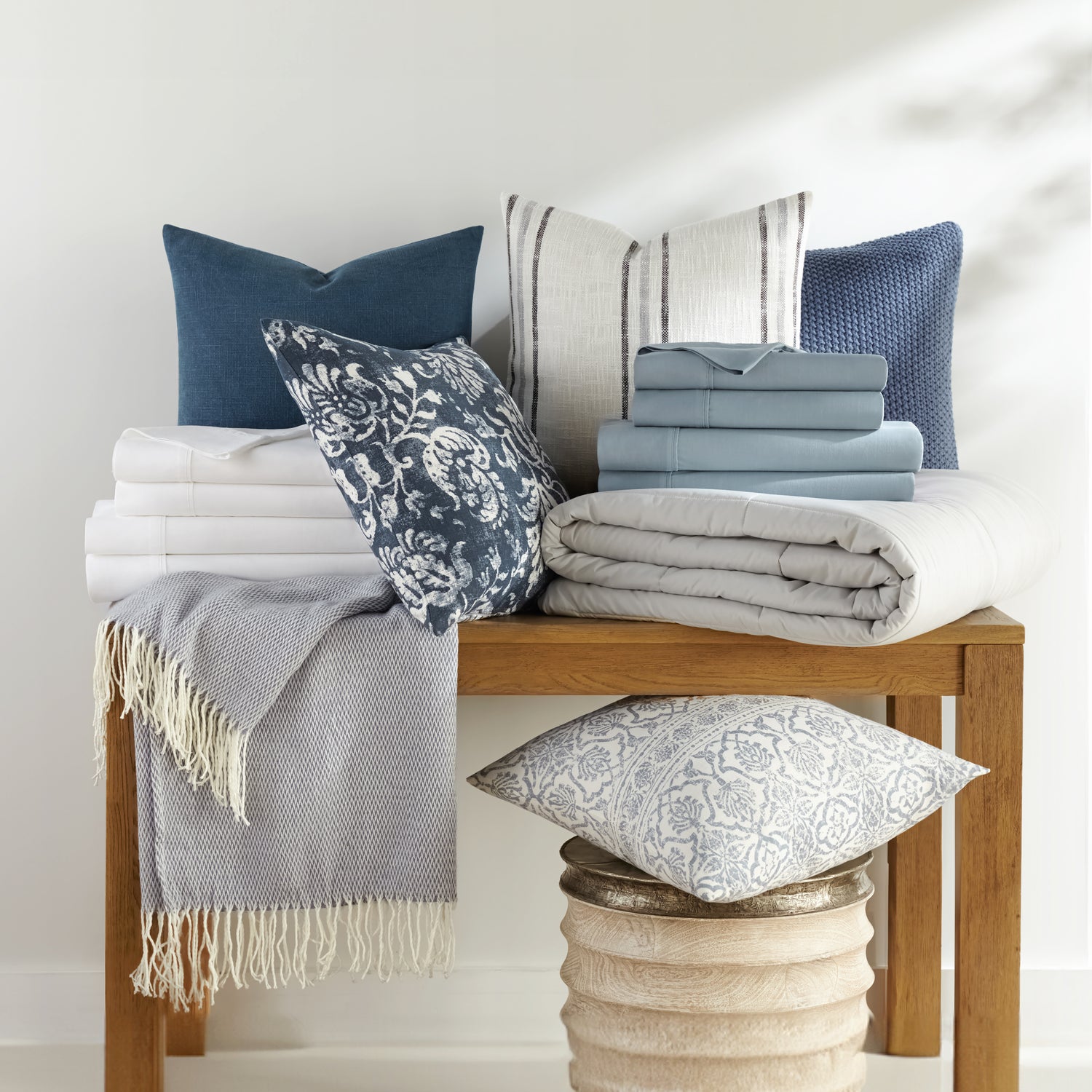What Is a Bedspread? And What Is It Used For?
Bedding can be confusing with so many layers, types, and terms. If you’ve ever wondered what a bedspread actually is, you’re not alone. Many people mix them up with comforters or quilts. This guide breaks it down in clear, simple terms.
You’ll learn what makes a bedspread unique, how it functions in your bedroom, and when it’s the best choice for you to use. We’ll also cover popular styles, sizes, materials, and how to care for them properly. Whether you're updating your bedding or just curious about this lightweight top layer, this article will help you decide if a bedspread is right for your space.
Table Of Contents
- What Is a Bedspread?
- How a Bedspread Functions in Your Room
- Bedspread vs Other Bedding
- Benefits of Using a Bedspread
- Popular Bedspread Materials and Styles
- Choosing the Right Bedspread Size
- Caring for Your Bedspread
- Conclusion
What Is a Bedspread?
A bedspread is a lightweight decorative layer that covers the entire bed, often reaching down to the floor. It serves as the top layer and is typically used to give your bed a clean, finished look. Most bedspreads are thin and made for warmer seasons or for layering over other blankets during cooler months.
Unlike thicker comforters, bedspreads are more about style than warmth. They come in a variety of textures and patterns and can enhance your room’s overall design.
How a Bedspread Functions in Your Room
The main job of a bedspread is to make your bed look neat. It hides everything underneath, including sheets, blankets, and sometimes even the bed frame. Bedspreads are perfect for guest rooms or for people who like a minimalist look. Because they’re lightweight, they’re easy to put on in the morning and remove at night.
They can be used alone in warm weather or as an extra layer in colder months. When styled with pillow shams or decorative pillows, bedspreads help create a complete and polished bed setup.
Bedspread vs Other Bedding
It’s easy to confuse a bedspread with other top-layer bedding options, but each has its own role.
Comforters are thick and plush, designed mainly for warmth.
Duvets require covers and offer more insulation.
Quilts have a layered, stitched design and sit somewhere between a comforter and a bedspread in terms of weight.
Bedspreads are thinner and lighter than all of these. They’re designed more for decorative use and less for warmth.
If you value a tidy, hotel-style bed appearance, a bedspread may be the best choice. It provides full coverage and is easy to handle.
Benefits of Using a Bedspread
Bedspreads are a smart addition to any bedding setup. Here are some of the key benefits they offer:
-
Lightweight feel: Ideal for summer or warm climates
-
Easy to style: Instantly gives your bed a finished look
-
Low maintenance: Simple to wash and dry
-
Full coverage: Hides everything underneath for a clean visual
- Versatile use: Great alone or as part of a layered set
If you’re someone who wants bedding that looks good without the fuss, a bedspread can meet your needs without adding bulk or complexity.
Popular Bedspread Materials and Styles
Bedspreads come in many different materials and styles. Each offers a unique look and feel. Common materials include cotton, polyester, linen, and blends.
Cotton is breathable and easy to wash.
Polyester offers wrinkle resistance and is often more affordable.
Linen has a textured, relaxed look that works well in modern or coastal spaces.
In terms of style, you can choose from classic patterns like floral and damask or go with solids and modern prints for a more updated vibe. Some bedspreads have quilting or embossed textures that add dimension without adding weight. You can even find reversible options that give you two looks in one.
Choosing the Right Bedspread Size
Choosing the right size bedspread is important if you want your bed to look just right. Bedspreads are designed to hang down the sides of the bed, often reaching the floor. This means you may need a size larger than your actual mattress to get the right amount of coverage.
For example, a queen-size mattress may benefit from a king-size bedspread if you want a full drape. Always check the product’s measurements—not just the label—since sizes can vary by brand. If your bed is extra high or you use a mattress topper, you’ll want to measure the depth and width before buying.
Caring for Your Bedspread
Taking care of a bedspread is fairly simple. Most can be machine washed using cold or warm water on a gentle cycle. Always check the label for care instructions before washing. Some delicate or decorative types may need dry cleaning.
Use mild detergent and avoid bleach to protect the color and fabric texture. Tumble dry on low heat or air dry to prevent shrinkage. If your bedspread wrinkles after drying, a quick steam or light ironing can help smooth it out. Storing it properly during the off-season—folded in a dry, cool space—will keep it in great shape for years.
Conclusion
A bedspread is a versatile, lightweight cover that adds style and polish to your bedroom. While it won’t replace heavy blankets for warmth, it offers plenty of visual appeal and comfort for everyday use. From minimalist rooms to elegant guest spaces, bedspreads work well in different settings.
They’re easy to care for, simple to style, and available in a wide range of designs to suit any taste. Whether you use it alone or as a decorative layer, a bedspread can transform your bedroom with minimal effort. Now that you understand what a bedspread is and how to use one, you can decide if it’s the right choice for your bed!

